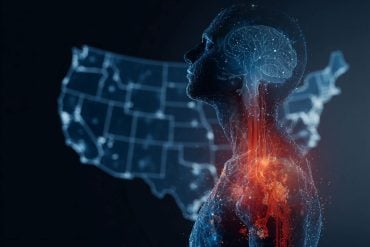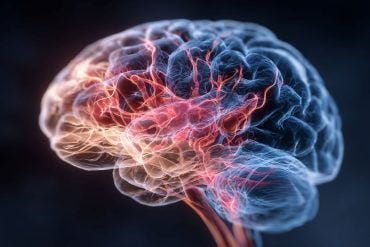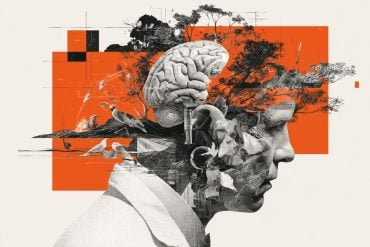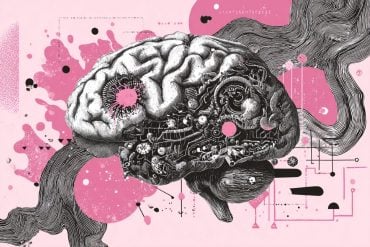Summary: Researchers have identified altered gene expression in the prefrontal area of the brain in those with schizophrenia. The study reports schizophrenia may have evolved as ‘side effect’ of human brain development.
Source: Swinburne University of Technology.
Schizophrenia may have evolved as an “unwanted side effect” of the development of the complex human brain, a new study has found.
The study identified changed gene expression in the area of the brain that is most different between humans and animals, including our closest species, non-human primates.
Published by the Nature publishing journal, Schizophrenia, the study was undertaken by a group of researchers from Swinburne, The Florey Institute of Neuroscience & Mental Health and University of Melbourne. It reveals major changes in gene expression in the frontal area of the brains of those with schizophrenia.
“This is the area of our brain that evolved latest and most sets us apart from other species,” says Professor Brian Dean of Swinburne’s Centre for Mental Health and the Florey Institute.
“There is the argument that schizophrenia is an unwanted side effect of developing a complex human brain and our findings seem to support that argument.”
A genetic susceptibility
Schizophrenia is now thought to occur in people with a genetic susceptibility after they encounter a harmful environmental factor such as premature birth or drug use.
“It’s thought that schizophrenia occurs when environmental factors trigger changes in gene expression in the human brain. Though this is not fully understood, our data suggests the frontal area of the brain is severely affected by such changes,” says Professor Dean.
While undertaking the research, Professor Dean’s team conducted a post-mortem human brain study in which they compared gene expression between 15 patients with schizophrenia and 15 without.
In the instance of brains from people known to have had schizophrenia, the team found 566 instances of altered gene expression in the most frontal pole part of the brain, and fewer changes in proximal regions.
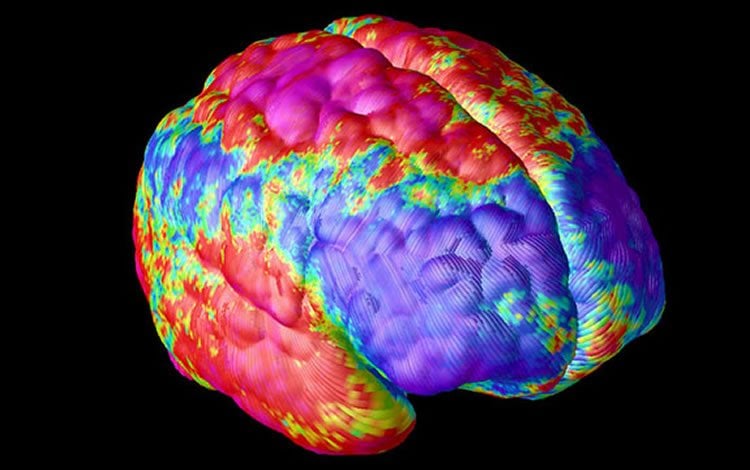
“These brain areas are known to mediate schizophrenia-related traits,” says Professor Dean.
A key finding in this study is a pathway containing 97 differentially-expressed genes that contains a number of potential drug treatment targets that could particularly affect people with schizophrenia.
“A better understanding of changes in this pathway could suggest new drugs to treat the disorder,” says Professor Dean.
The study paints a complex picture of the causes of schizophrenia, he says but it suggests modern technologies can be used to help unravel these complexities.
Source: Nick Adams – Swinburne University of Technology
Publisher: Organized by NeuroscienceNews.com.
Image Source: NeuroscienceNews.com image is credited to NIH.
Original Research: Open access research in Schizophrenia.
doi:10.1038/s41537-018-0044-x
[cbtabs][cbtab title=”MLA”]Swinburne University of Technology “Schizophrenia is a Side Effect of Human Development.” NeuroscienceNews. NeuroscienceNews, 21 February 2018.
<https://neurosciencenews.com/schizophrenia-human-development-8534/>.[/cbtab][cbtab title=”APA”]Swinburne University of Technology (2018, February 21). Schizophrenia is a Side Effect of Human Development. NeuroscienceNews. Retrieved February 21, 2018 from https://neurosciencenews.com/schizophrenia-human-development-8534/[/cbtab][cbtab title=”Chicago”]Swinburne University of Technology “Schizophrenia is a Side Effect of Human Development.” https://neurosciencenews.com/schizophrenia-human-development-8534/ (accessed February 21, 2018).[/cbtab][/cbtabs]
Abstract
Changed frontal pole gene expression suggest altered interplay between neurotransmitter, developmental, and inflammatory pathways in schizophrenia
Schizophrenia (Sz) probably occurs after genetically susceptible individuals encounter a deleterious environmental factor that triggers epigenetic mechanisms to change CNS gene expression. To determine if omnibus changes in CNS gene expression are present in Sz, we compared mRNA levels in the frontal pole (Brodmann’s area (BA) 10), the dorsolateral prefrontal cortex (BA 9) and cingulate cortex (BA 33) from 15 subjects with Sz and 15 controls using the Affymetrix™ Human Exon 1.0 ST Array. Differences in mRNA levels (±≥20%; p < 0.01) were identified (JMP Genomics 5.1) and used to predict pathways and gene x gene interactions that would be affected by the changes in gene expression using Ingenuity Pathway Analysis. There was significant variation in mRNA levels with diagnoses for 566 genes in BA 10, 65 genes in BA 9 and 40 genes in BA 33. In Sz, there was an over-representation of genes with changed expression involved in inflammation and development in BA 10, cell morphology in BA 9 and amino acid metabolism and small molecule biochemistry in BA 33. Using 94 genes with altered levels of expression in BA 10 from subjects with Sz, it was possible to construct an interactome of proven direct gene x gene interactions that was enriched for genes in inflammatory, developmental, oestrogen, serotonergic, cholinergic and NRG1 regulated pathways. Our data shows complex, regionally specific changes in cortical gene expression in Sz that are predicted to affect homeostasis between biochemical pathways already proposed to be important in the pathophysiology of the disorder.




